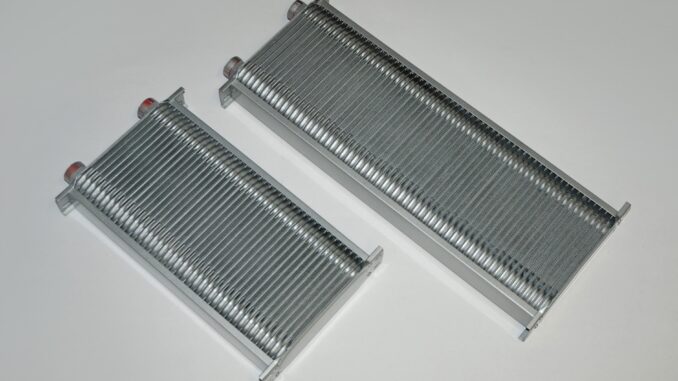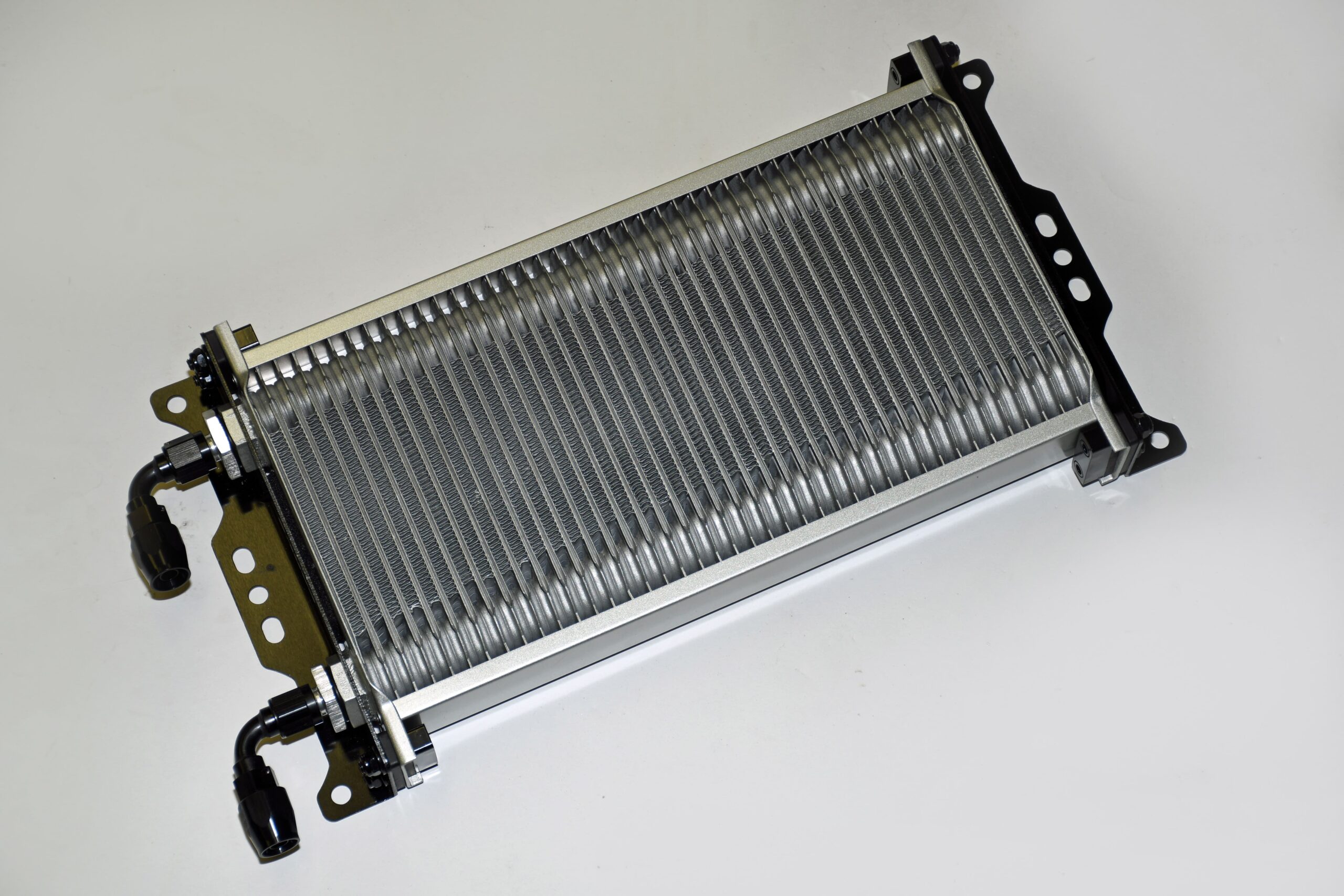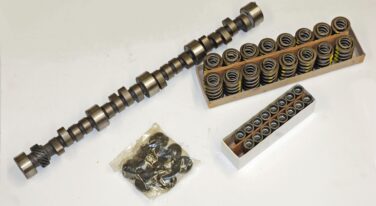
Earl's Transmission Coolers Part 1
Pound on an automatic-equipped hot rod (drag car, street-strip machine, etc) for any length of time and you’ll quickly learn that heat can kill the transmission in a heartbeat. Stir in more power and add more street driving and the problem amplifies. It’s the classic case of a car with a lot of horsepower, a small (sometimes slipping) torque converter and often a steep rear axle ratio. Engine RPM goes up across the board and the automatic builds heat. And a lot of it. Factor in the load and couple it with stop and go traffic and the level of heat increases even more in an automatic transmission. Don’t forget too that the same scenario applies to trucks. Add a load, pull a trailer (or both) and the transmission temperature skyrockets.
Fair enough, but how hot is too hot? Most transmission shops will tell you the ideal operating temperature for automatic transmission fluid is somewhere between 175 and 225° F. At approximately 240° F, important additives in the AFT begin to barbeque. This results in the formation of varnish inside the transmission. At approximately 260° F, internal transmission seals (which are often manufactured from a polyacrylate material) begin to harden (lose elasticity). When the seals harden they leak. Those leaks can be internal or external. Once the temperature reaches roughly 295° F, transmission clutch plates begin to slip due to oil breakdown. After 315° F, seals and clutches effectively burn out. Carbon forms in the ATF. The automatic is junk. Typically after a few thousand miles (or less) with temps exceeding 300° F, the transmission will die.
It should be common knowledge that the typical automatic-equipped car has a built-in cooler taking up residence in the bottom of the radiator. Unfortunately, the performance of that cooler is marginal at the best of times. Sure an in-the-rad cooler will reduce the heat of the ATF but it's also influenced by the engine coolant temperature. Simultaneously, ATF heat can influence engine coolant temperature. Here’s how that works: Let’s assume the car in question has (for example) a thermostat that opens at 195° F. Once the engine is warmed to operating temperature, the transmission cooler will have a tough time (most likely an impossible time) of reducing the heat of the ATF below 195° F. Should the transmission be overworked, it can easily spike the operating temperature of the ATF to 250° F or more. This quickly transfers to the engine coolant side of the equation. The next thing you know, the car boils over.
There’s a simple solution. Add an external cooler (the proper name is actually a "liquid to air heat exchanger"). But before you rush out and buy the first cooler available, here’s something you should really consider: It is almost impossible to overcool an automatic transmission -- especially one in a high-performance application. Obviously, this might not necessarily apply to vehicles running around in sub-zero conditions, but that has no bearing on a hot rod. In the photos that follow we’ll share some photos of a great cooler combination. And watch for the next part in this series. You might be surprised.
Click Here to Begin Slideshow
Fair enough, but how hot is too hot? Most transmission shops will tell you the ideal operating temperature for automatic transmission fluid is somewhere between 175 and 225° F. At approximately 240° F, important additives in the AFT begin to barbeque. This results in the formation of varnish inside the transmission. At approximately 260° F, internal transmission seals (which are often manufactured from a polyacrylate material) begin to harden (lose elasticity). When the seals harden they leak. Those leaks can be internal or external. Once the temperature reaches roughly 295° F, transmission clutch plates begin to slip due to oil breakdown. After 315° F, seals and clutches effectively burn out. Carbon forms in the ATF. The automatic is junk. Typically after a few thousand miles (or less) with temps exceeding 300° F, the transmission will die.
It should be common knowledge that the typical automatic-equipped car has a built-in cooler taking up residence in the bottom of the radiator. Unfortunately, the performance of that cooler is marginal at the best of times. Sure an in-the-rad cooler will reduce the heat of the ATF but it's also influenced by the engine coolant temperature. Simultaneously, ATF heat can influence engine coolant temperature. Here’s how that works: Let’s assume the car in question has (for example) a thermostat that opens at 195° F. Once the engine is warmed to operating temperature, the transmission cooler will have a tough time (most likely an impossible time) of reducing the heat of the ATF below 195° F. Should the transmission be overworked, it can easily spike the operating temperature of the ATF to 250° F or more. This quickly transfers to the engine coolant side of the equation. The next thing you know, the car boils over.
There’s a simple solution. Add an external cooler (the proper name is actually a "liquid to air heat exchanger"). But before you rush out and buy the first cooler available, here’s something you should really consider: It is almost impossible to overcool an automatic transmission -- especially one in a high-performance application. Obviously, this might not necessarily apply to vehicles running around in sub-zero conditions, but that has no bearing on a hot rod. In the photos that follow we’ll share some photos of a great cooler combination. And watch for the next part in this series. You might be surprised.
Click Here to Begin Slideshow



![[Gallery] Show us Your Mustang! Celebrating 60 Years of Mustang](https://www.racingjunk.com/news/wp-content/uploads/2024/04/Al-Liebmann-376x206.webp)

![[Gallery] Okolona Street Rods Kentuckiana V Foundation Car Show](https://www.racingjunk.com/news/wp-content/uploads/2022/04/IMG_0774-e1650040587750-376x206.jpg)
![[Gallery] Road Rats Car Show](https://www.racingjunk.com/news/wp-content/uploads/2022/05/2A-e1651770667920-376x206.jpg)
Leave a Reply